Not mush-room for error: The tasty-looking fungi that could be the last thing you ever eat
The best thing that can happen on a mushroom hunt is a lovely day out with friends and a nice meal in the evening. The worst that can happen is death, warns John Wright.
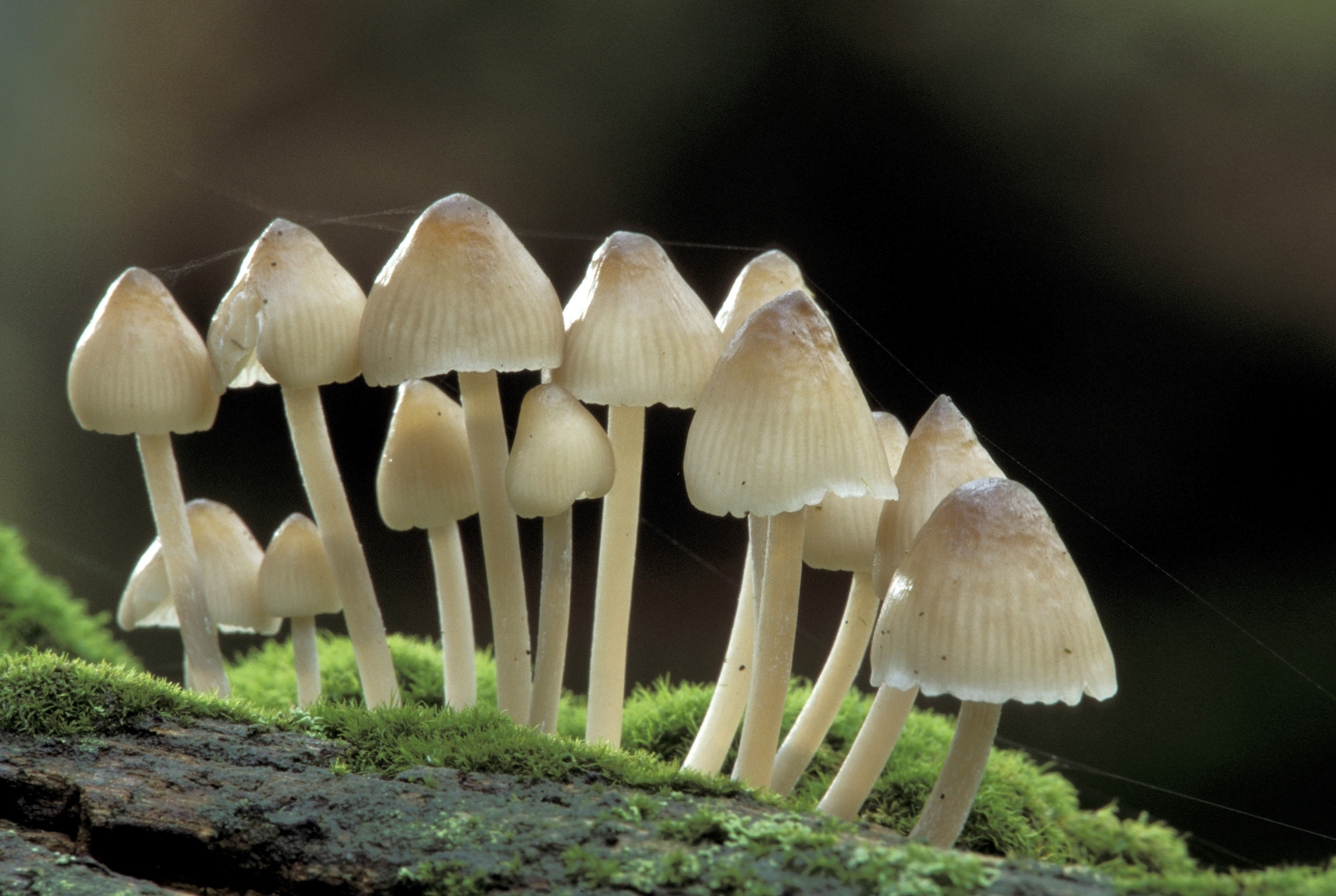
Last October, I toddled over to the local pub for my weekly pint with the other old boys from the village. Charlie had picked some ‘field mushrooms’ and duly shared out five small bags of his bounty among the assembled company. One glance told me that his knowledge of fungi was seriously wanting, as they were in fact yellow stainers (they turn chromium yellow when scratched), not field mushrooms (which don’t). I had saved the day, although not Charlie’s. He had eaten nine of them for tea and was to spend the entire night confined to the smallest of quarters. How we laughed!
Yellow stainers are not deadly, merely very nasty; I have met more than 100 people who have suffered thus. Being lookalikes of the related field and horse mushroom, two species with a British tradition of collection, they are by far the most common cause of mushroom poisoning in the UK. With the British having shown little interest in eating other ‘excrements of the earth’ (as physician James Hart put it in 1633’s The Diet of the Diseased) for all of their history, we have been lucky that the only likely mistake has been that of Charlie’s. There are far worse mushrooms than yellow stainers.
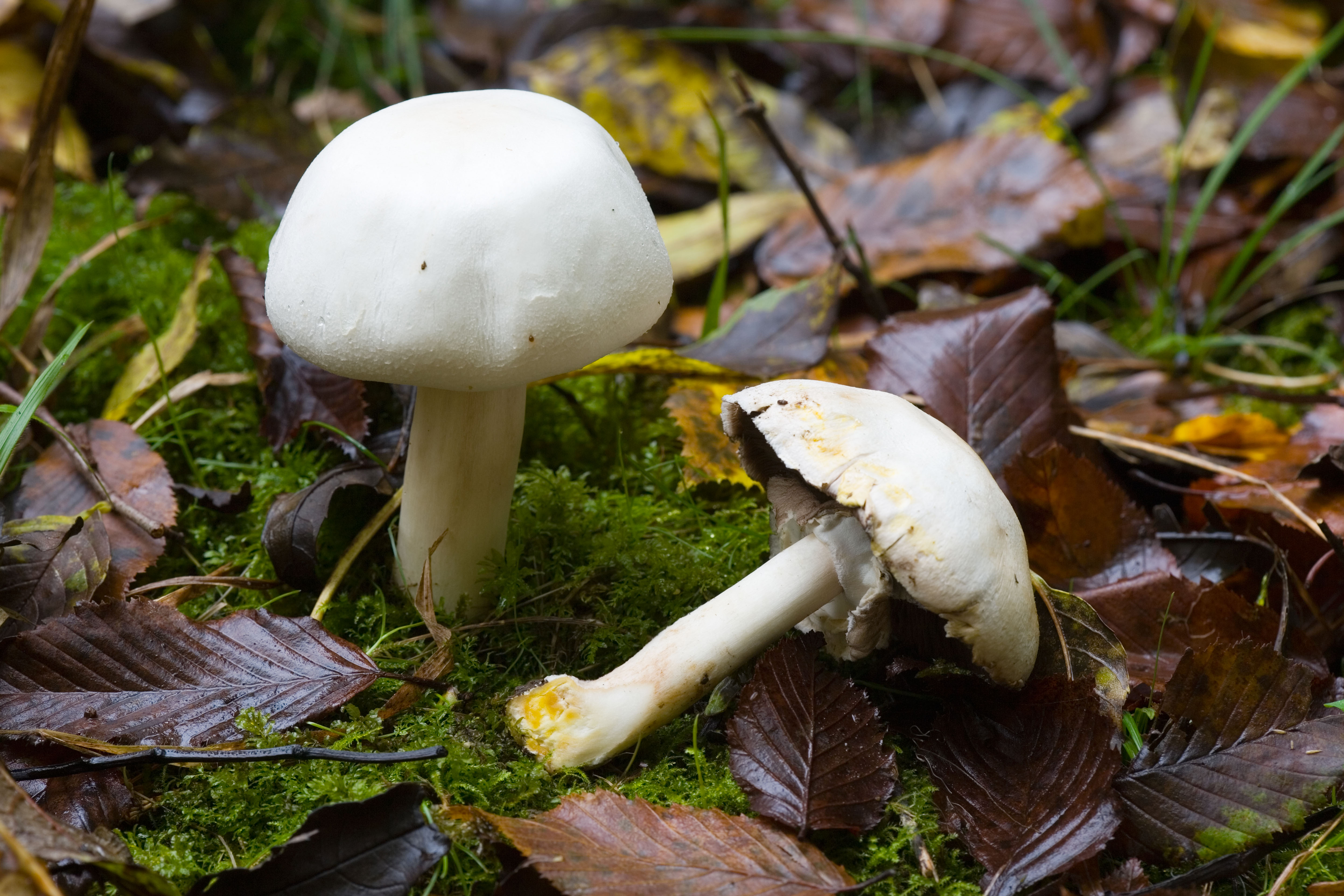
These are yellow stainer mushrooms — you can see how easy it would be to make Charlie's mistake.
Although there are easily 100 species of British fungi that will vigorously remind you to be more careful in future, the number that might provide no future at all is mercifully small. Dose is an important factor, as is the speed with which medical attention is provided. However, the most important factor is not eating a poisonous mushroom in the first place. There are no shortcuts to determining the edibility — you must be able to name your foraged mushrooms precisely. Never jump to conclusions, never ignore a mushroom characteristic that does not fit the description. As I once wrote elsewhere: the best thing that can happen on a mushroom hunt is a lovely day out with friends and family and a nice meal in the evening. The worst that can happen is a lovely day out, a meal that may or may not be nice and a horrible death for all concerned.
Deadly fibrecap
A post shared by The Foraging Course Company (@the_foraging_course_company)
A photo posted by on
Generally, fibrecaps are classic LBT’s (little brown toadstools) that even enthusiastic mycologists ignore. None is edible, but the largest of the tribe, the summer-fruiting deadly fibrecap, has caused deaths. It is an off-white colour, tending to cinnamon brown, and has occasionally been collected for the table due to its slight similarity to field or wood mushrooms. It contains the ‘sweating toxin’ muscarine, the main toxin of the fly agaric, albeit in much higher concentrations. One British death occurred at its hands in the 1930s, but I have seen it only twice in 50 years, so it is unlikely to be troublesome.
Angel wings
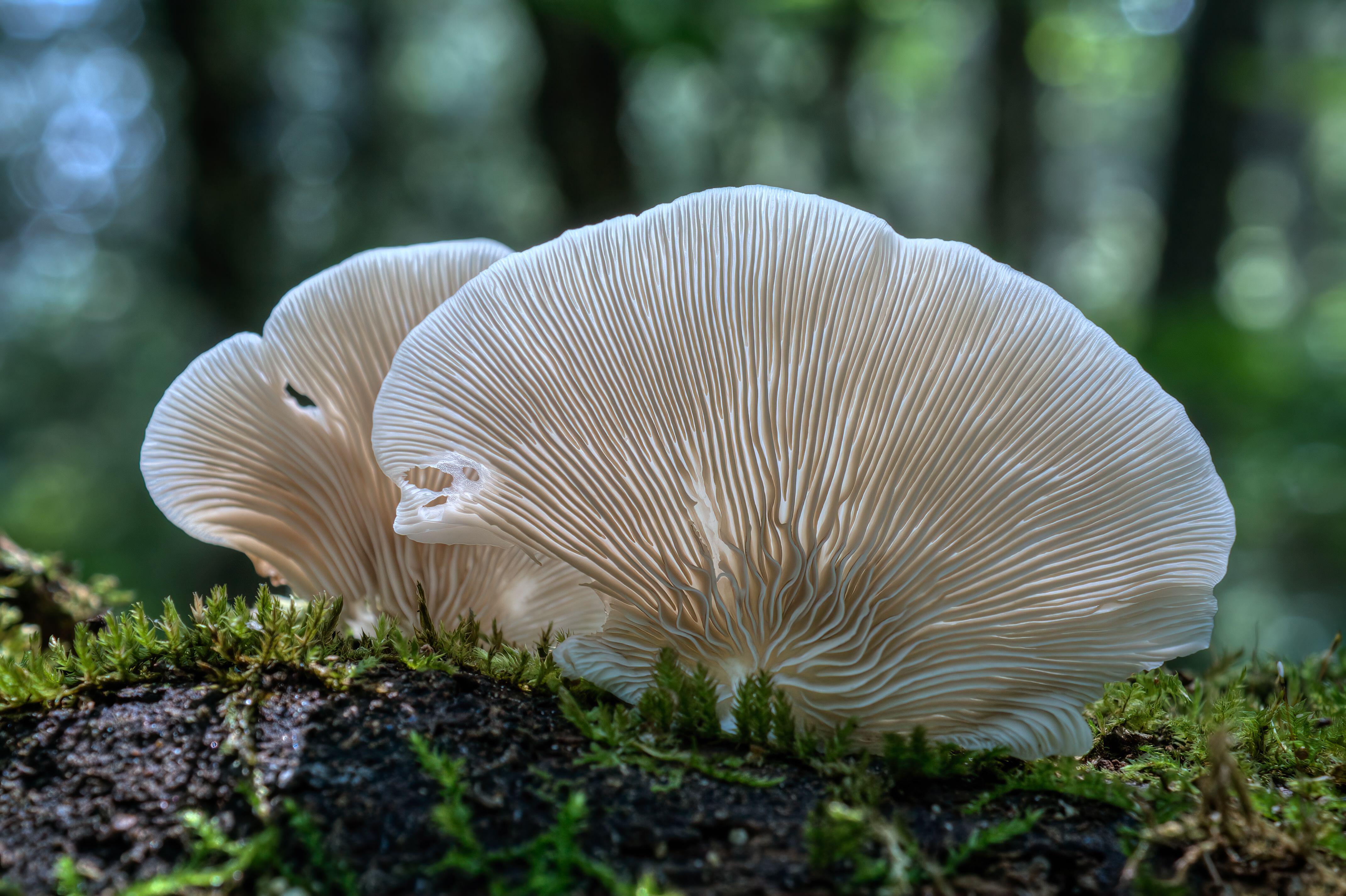
These oyster-mushroom lookalikes are particularly dangerous for people with pre-existing kidney conditions.
These oyster-mushroom lookalikes were once prized items on smart menus. However, they suffered a precipitous fall from grace after an outbreak of poisonings in Japan in 2004. Fifty-nine people suffered from the exceptional harvest that year and 17 of them died. All the victims were afflicted by acute encephalopathy and most had a pre-existing kidney impairment. Since then, there have been occasional poisonings elsewhere. To distinguish angel wings from the edible oyster mushrooms, note that they grow only on dead pine and cedar and that the cap is a bright, matt white. They are rare in England, occasional in Snowdonia and common in Scotland, where I have seen them several times. I would guess that those of us with sprightly kidneys will be immune, but nagging fear should stay our woks.
Dapperlings
A post shared by Rachel Zoller (@yellowelanor)
A photo posted by on
The dapperlings (Lepiota) form a group that produces the same toxin as the death cap: phalloidin. They are all exquisitely beautiful, but have the unfortunate characteristic of looking like the edible parasols (Macrolepiota), only smaller. I once met a lady at a dinner I was hosting who told me that she had been desperately ill from eating some ‘rather small’ parasols. Eschewing medical assistance, she laid in bed for a week and evidently recovered. It was obvious what she had eaten. Contrary to her preconception, immature parasols are never diminutive doppelgangers of mature parasols. Instead, they grow to their full height as a ‘sphere on a stick’, then open like, well, a parasol.
False morel
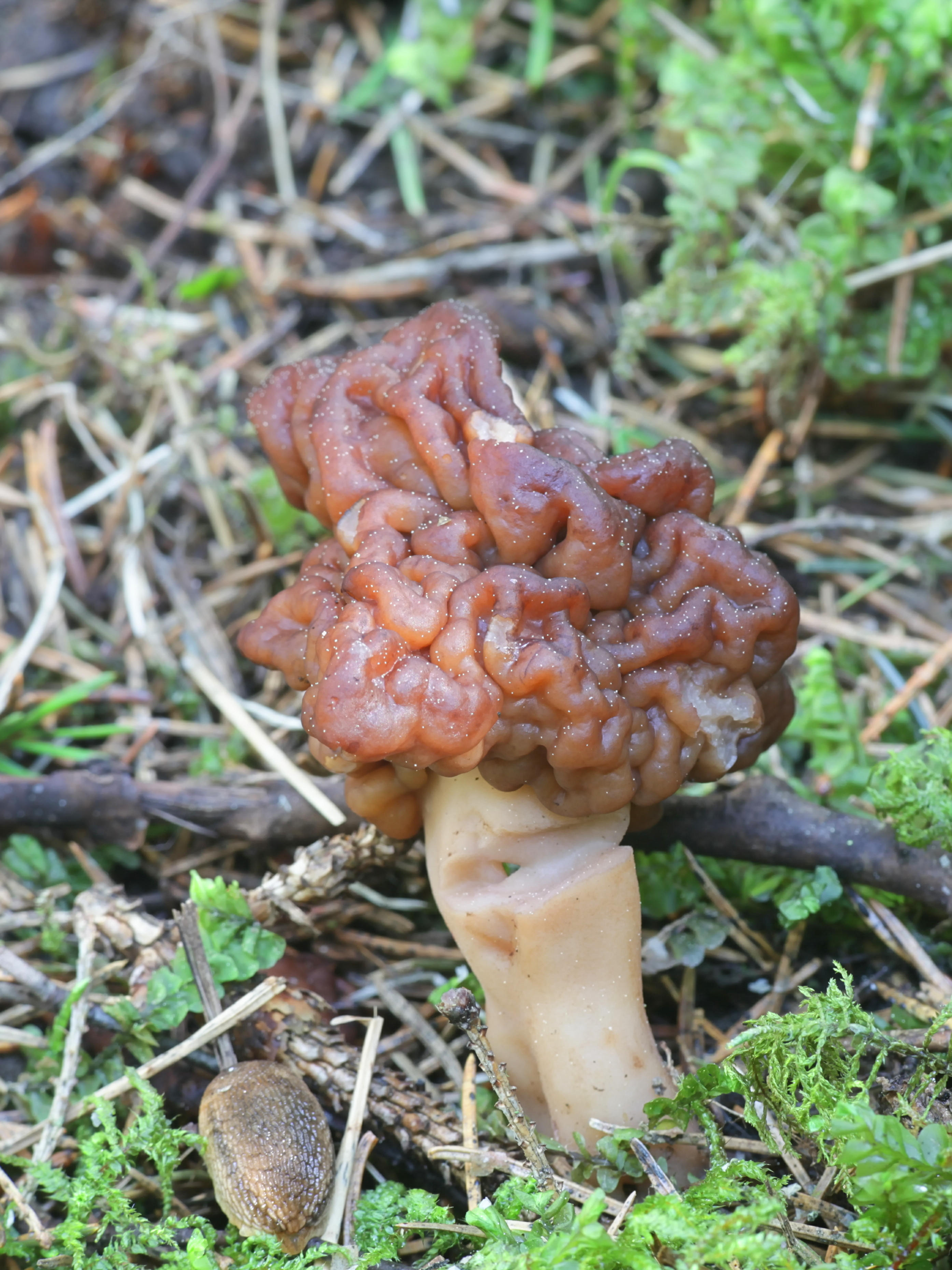
Don't know why you'd eat that, personally.
Morsels are among the most highly prized of fungi, although uncommon in Britain except on flowerbed wood chippings, where the black morel has found a new home. The edible morels have a honeycomb structure to the outside of their cap, whereas the deadly false morel’s cap looks like a ball of intricately wrinkled, screwed-up leather. Its Latin name is Gyromitra esculenta, the last word meaning ‘edible’, as it has been consumed after special preparation. The list of symptoms is long and grim: severe gastro-intestinal issues, tremors, dizziness and vertigo, followed by all the horrors of kidney and liver failure. The chemical involved is monomethyl-hydrazine, a rocket fuel. It is uncommon and scattered in England and Wales, but relatively common in north-eastern Scotland.
Exquisite houses, the beauty of Nature, and how to get the most from your life, straight to your inbox.
Brown rollrim
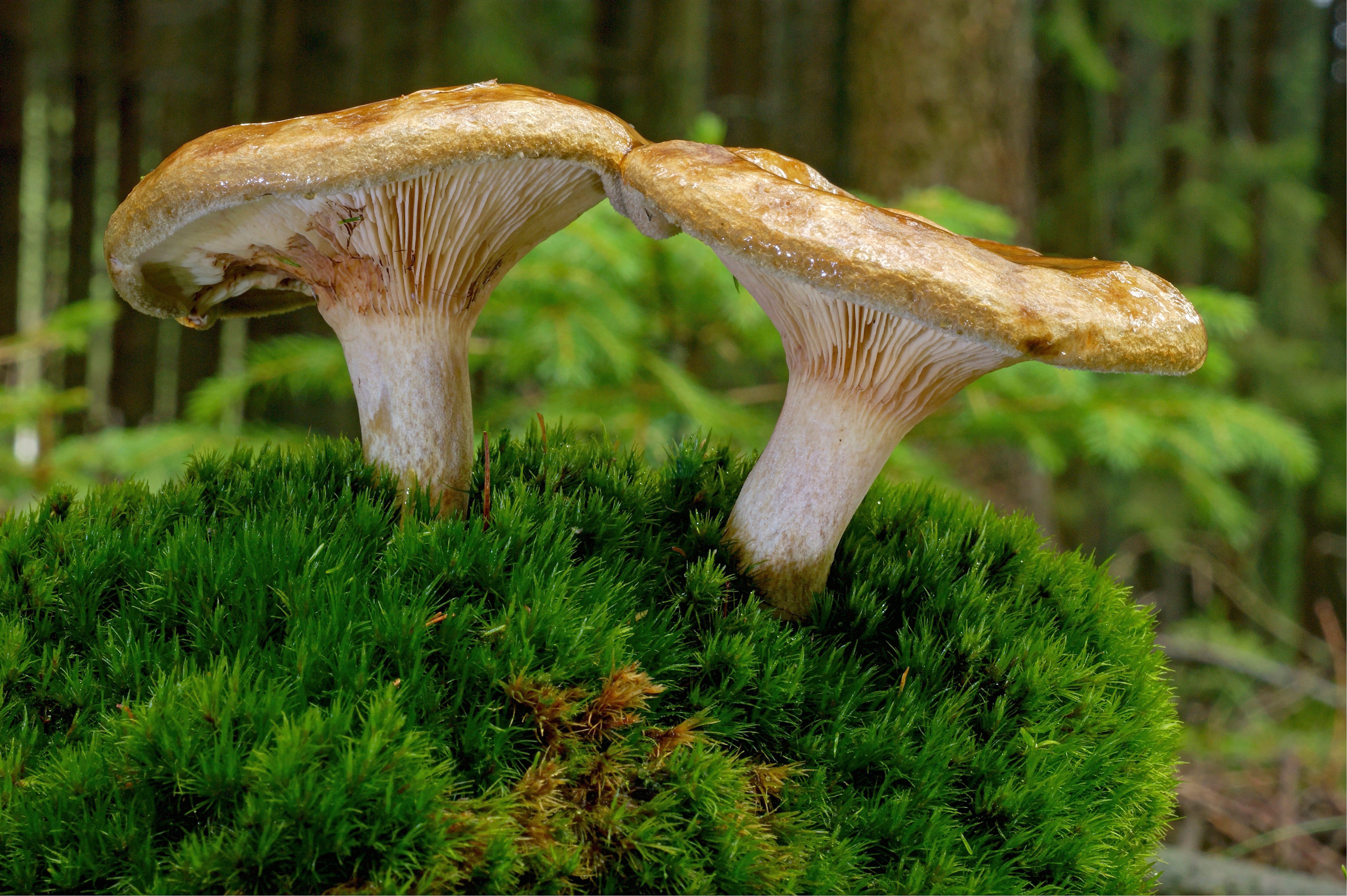
The main toxic component of the brown rollrim is an antigen that builds up in the body and destroys red blood cells.
Grubby brown, slimy when wet and shallowly funnel-shaped with broad grooves on the cap edge, the brown rollrim always looks as if it might be helping the police with their enquiries. Nevertheless, it was commonly consumed in central Europe (and probably still is) with word on the mycological grapevine that people who have moved to Britain from Eastern Europe have collected it here. It is possible, but by no means certain, that you could eat a plate of these cooked (they must be cooked — and very well) with no sign of poisoning. Eat them over months or years and it may be a different story. The main toxic component is an antigen that builds up in the body (or its effect does) and triggers ‘autoimmune haemolytic anaemia’: the catastrophic destruction of red blood cells. An appreciable number of people have died at its hands, including the mycologist who discovered its effects the hard way in 1944, one Julius Schäffer. Unfortunately, it is one of the most common of all the woodland mushrooms.
Webcaps
A post shared by The Mushroom Men 🍄 (@the_mushroommen)
A photo posted by on
There are a very large number of species in and around the genus Cortinarius, none of which are considered to be edible. I did eat one once, but its flavour of cyanide (bitter almonds) put me off rather. Cyanide, however, is not the problem. One grouping within the webcaps is known as the Orellani; the relevant two being the deadly webcap and the fool’s webcap, both of which contain lethal quantities of the toxin orellanine. This can take several days to make its presence known to the victim, by which time considerable damage has been done to the kidneys. These mushrooms were recognised for their toxicity after a mass poisoning in Poland in 1952. More than 100 people suffered symptoms and 11 died. Deaths are infrequent now with modern medical treatments, but haemodialysis and kidney transplants are no picnic. There was a case in Scotland in the 1970s when two people ate them (they survived) and an infamous one from 2008 when the writer Nicholas Evans and three others were poisoned after gathering them in Scotland. One person recovered, but the others lost kidney function completely. It is unclear what they confused them with, although chanterelles are mentioned in reports. However, chanterelles are bright yellow and funnel shaped, whereas deadly webcaps are cinnamon brown and classic mushroom shaped. It would be like confusing a black dog with a white duck.
Death cap and destroying angel

A young death cap mushroom looks entirely innocent. Not so.
About 90% of deaths from fungus poisoning are due to the liver- and kidney-destroying death cap, the species that has gained notoriety from the recent Australian poisonings. There are estimated to be about 100 fatalities worldwide each year. It is moderately common throughout Britain and I see it most years. I know of two recent deaths from death caps in Britain, one from 2012 in Somerset and the other from 2008, when a Thai woman on the Isle of Wight picked a bag-full, mistaking them for the similar paddy-straw mushroom that she was probably familiar with from her country of origin. Both victims had shared their finds with one other person, but both of these survived after treatment, having eaten only a small amount. The death cap is a sickly green on top, has a pendulous ring on the stem and a distinct bag at the stem base. The similarly deadly destroying angel is strikingly statuesque and pure white all over.
This feature originally appeared in the August 6, 2025, issue of Country Life. Click here for more information on how to subscribe